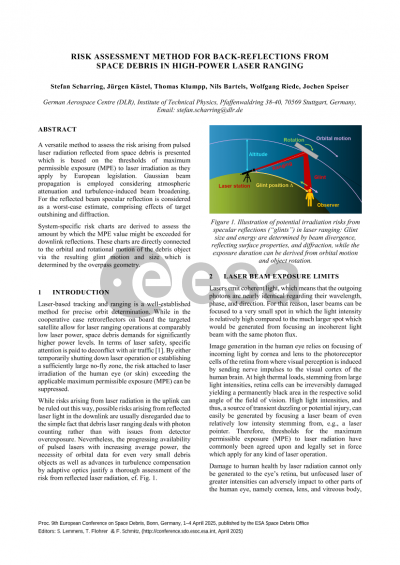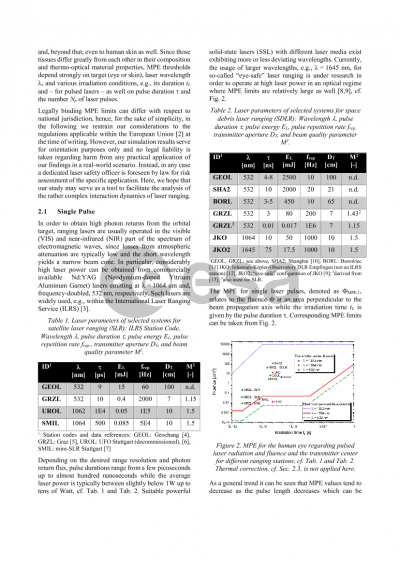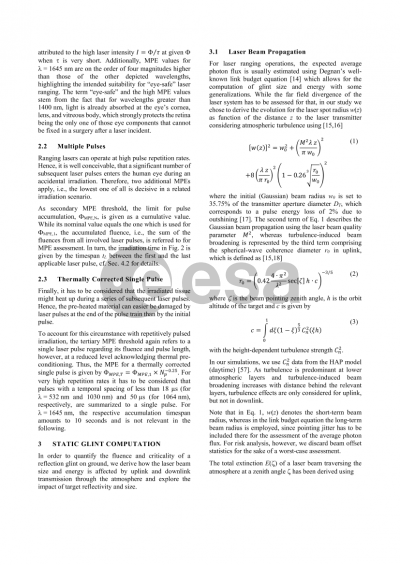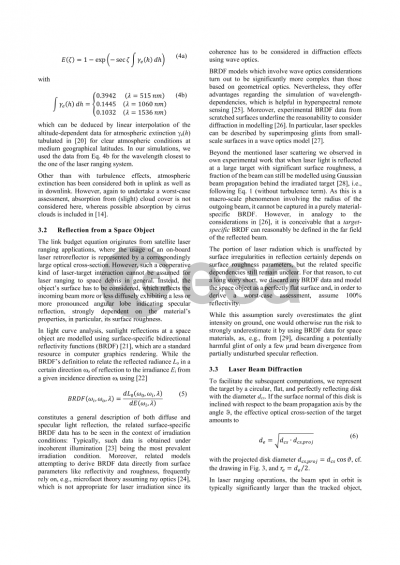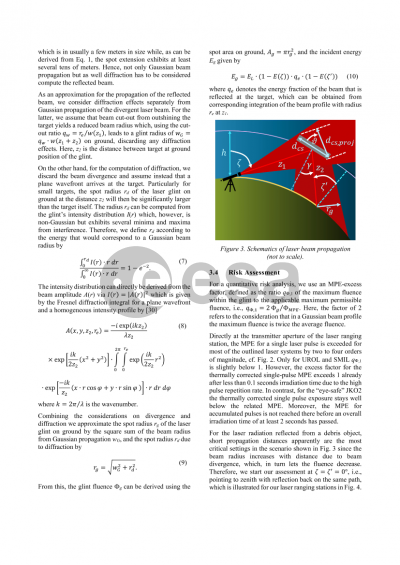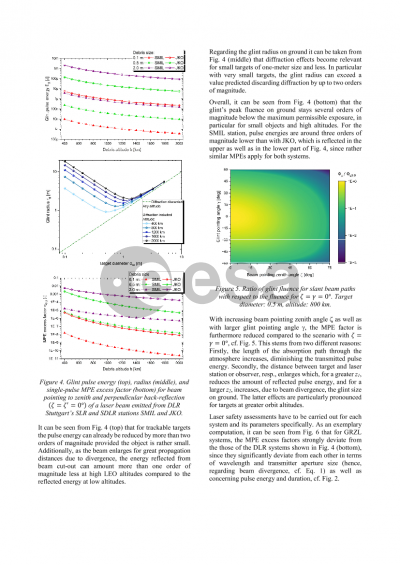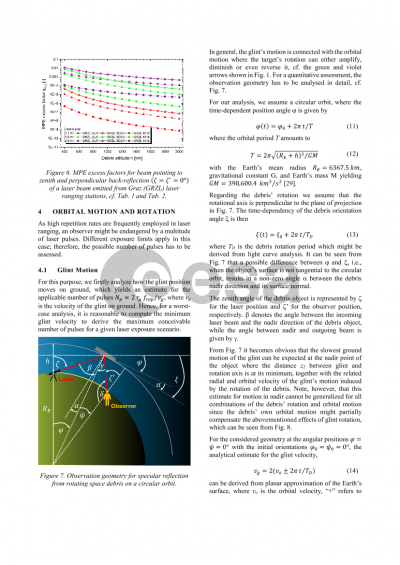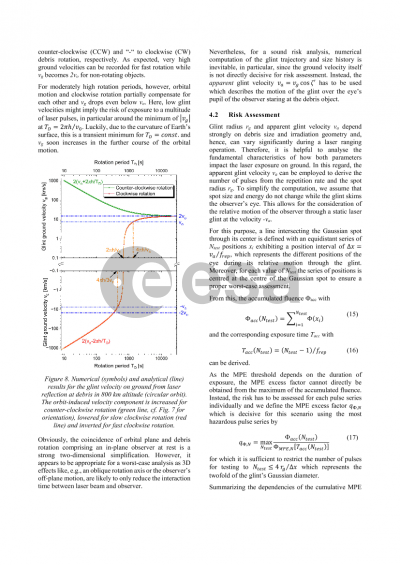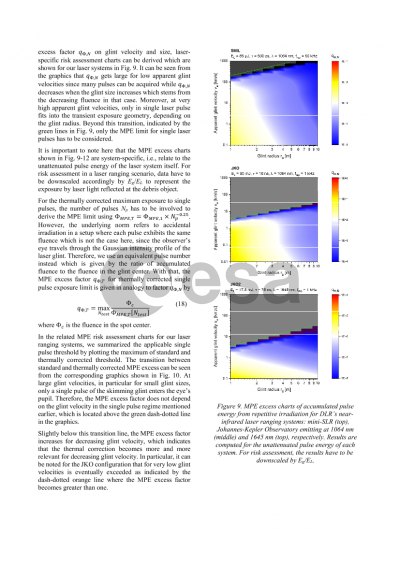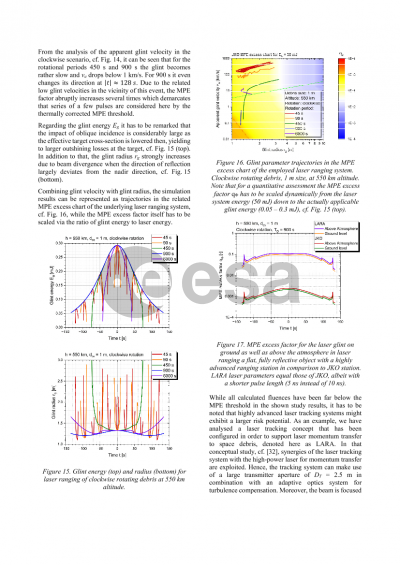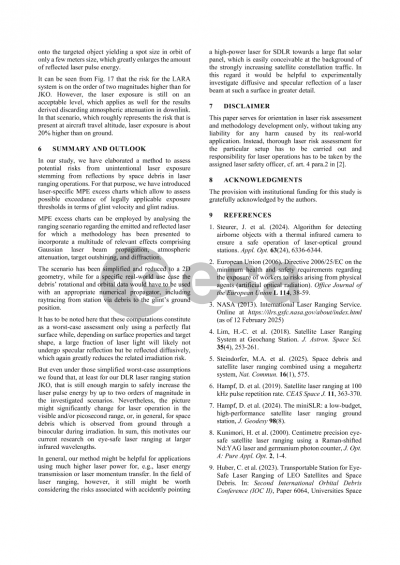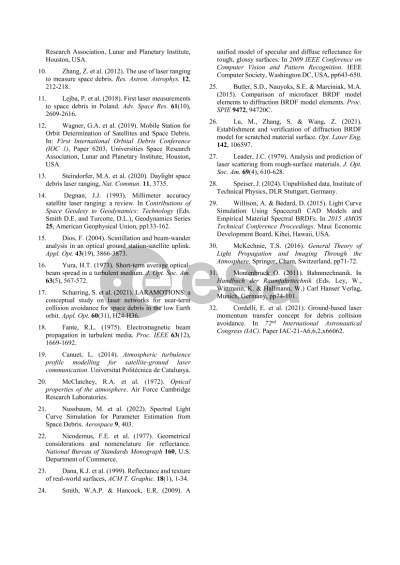Document details
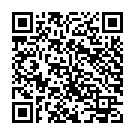
Abstract
Laser-based tracking and ranging is a well-established method for precise orbit determination. While in the cooperative case retroreflectors on board the targeted satellite allow for laser ranging operations at comparably low laser power, space debris demands for significantly higher power levels. In terms of laser safety, specific attention is paid to deconflict with air traffic. By either temporarily shutting down laser operation or establishing a sufficiently large no-fly zone, the risk attached to laser irradiation of the human eye (or skin) exceeding the applicable maximum permissible exposure (MPE) can be suppressed.
While risks arising from laser radiation in the uplink can be ruled out this way, possible risks arising from reflected laser light in the downlink are usually disregarded due to the simple fact that debris laser ranging deals with photon counting rather than with issues from detector overexposure. Nevertheless, the progressing availability of pulsed lasers with increasing average power, the necessity of orbital data for even very small debris objects as well as advances in turbulence compensation by adaptive optics justify a thorough assessment of the risk from reflected laser radiation.
In our analysis, we present a versatile method to assess the risk arising from pulsed laser radiation reflected from space debris. For this purpose, we employ the MPE thresholds for the unaided human eye as they apply in by European legislation. We use Gaussian beam propagation from the laser transmitter to the debris object, considering atmospheric attenuation, turbulence-induced beam broadening as well as the option of turbulence compensation using adaptive optics. For the reflected beam, both directional scattering as well as specular reflection are analysed, of which the latter is considered in greater detail in order to derive a worst-case estimate. Moreover, target outshining is explored in terms of the reflected energy fraction and beam modification due to angular cut-off and diffraction. From this, beam propagation analysis allows to assess the fluence incident on ground and in airspace travel altitude, respectively, which serves as a means to assess the risk arising from single pulse exposure.
For exposure with a sequence of laser pulses, which is well conceivable at high pulse repetition rates, exposure limits need to be considered which comprise cumulative effects, in particular the thermal burden for the human retina. For that purpose, we show how to derive system-specific risk charts to assess the amount by which the MPE value might be exceeded for downlink reflections. Here, not only the size but also the ground velocity of the reflected laser spot as well as the target observation angle determine the laser exposure risk, which is illustrated for different objects in the low Earth orbit at various debris rotation rates.
Based on the presented method, combining laser safety regulations with orbit propagation and target rotation data, the maximum conceivable exposure by a back-reflected laser beam can be predicted numerically for any given overpass geometry.
Preview
